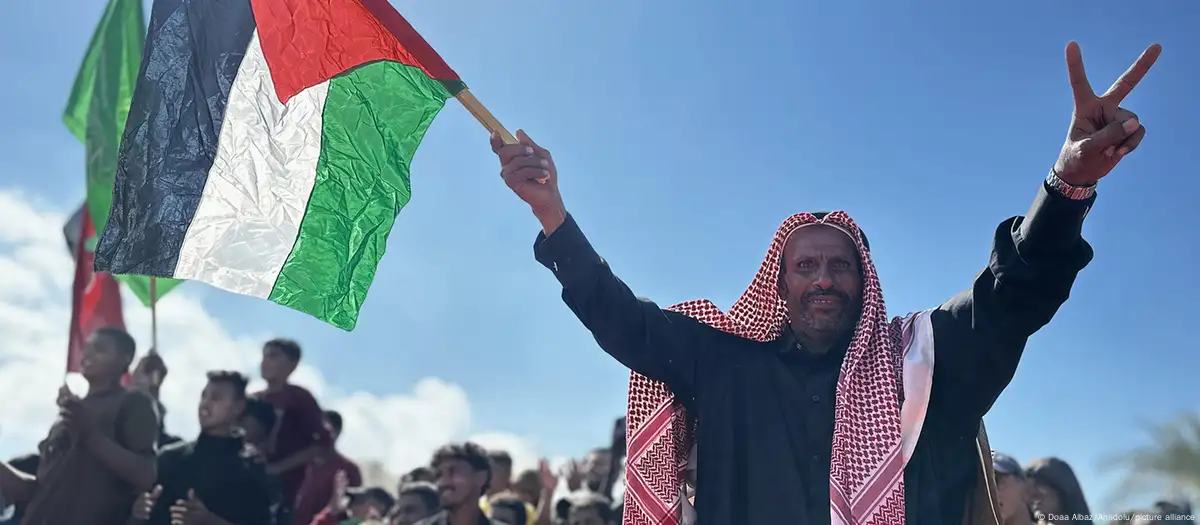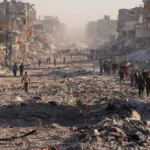
Details of the peace plan that led to the Gaza ceasefire are deliberately vague, negotiators say. Many questions still remain, and the answers could bring peace or a return to fighting.
Vague and undefined: Experts agree that these are the best descriptions of the ceasefire plan that the United States government can carry out in Gaza.
Some observers, including the main mediators, say this vagueness was deliberate and even necessary for the opponents – the Gaza-based extremist group Hamas and the right-wing Israeli government – to agree on something.
There is still much to be negotiated, and the lack of clarity fuels fears of new fighting. “The fact that Israel and Hamas have agreed to the first phase of a ceasefire plan is an important first step,” Hugh Lovatt, senior fellow in the Middle East and North Africa program at the European Council on Foreign Relations (ECFR), tells DW.
“However, it is too early to talk about peace and there are still significant issues and concerns that need to be addressed. […] The key to a successful ceasefire is whether the plans can actually be implemented and whether both sides fulfill their side of the agreement.”
Issues such as the demilitarization of Gaza, the proposal for an “international stabilization force,” international guarantees and the long-term intentions of the Israeli government are still being debated, explains Lovatt.
Will Israel completely withdraw from Gaza?
Gaza is 41 kilometers long and 10 kilometers wide. After two years of conflict, the Israeli army claimed control of most of the coastal enclave.
The peace deal sponsored by US President Donald Trump says Israel would not control or annex Gaza and that Israeli troops should withdraw if Israeli hostages are released. There are reports that Israeli troops partially withdrew in recent days, and the remaining 20 hostages were released this Monday (13/10).
The initial military withdrawal is limited to the “yellow line”, a border within Gaza where the Israeli military still controls about half of the Strip.
Under the peace agreement, the Israeli military will retreat further after other conditions are met. They will move to a “red line” once an “international stabilization force” is deployed. Then, when Gaza is under the control of a new transitional authority, they will retreat even further.
No timeline was provided in the peace agreement, so it is unclear when everything will occur.
This final withdrawal would see Israeli troops return to policing the buffer zone between Israel and Gaza, which has existed since the beginning of the century. Israel has expanded this zone over time and argues that the area is necessary for its security.
The buffer zone used to be 300 meters from the border, but in the January 2025 ceasefire agreement it was redrawn “with a depth of 700 to 1,100 meters inside Gaza,” the Israeli non-profit organization Gisha, which defends Palestinian freedom of movement, reported in March.
This represents about 17% of the Gaza Strip and would also mean the permanent destruction of communities and access to agricultural land, according to Gisha.
Who is the “international stabilization force”?
Point 15 of the peace plan states that the United States will cooperate with Arab and international partners to deploy an “international stabilization force,” or ISF, in Gaza.
This force would work with Israel and Egypt to secure Gaza’s borders and would also train and support a new police force.
Experts from the Washington-based Center for Strategic and International Studies (CSIS) noted last week, in a situational analysis, that such cooperation could be especially challenging.
“The creation of an international stabilization force from Arab and global partners will also face major obstacles. Unless there is clear support from Palestinian elements on the ground (including Hamas, which opposes the idea), it is difficult to imagine that any Arab force would be willing to be deployed to the ground.”
A spokesperson for the French Foreign Ministry told journalists that the country was ready to contribute to an ISF; Germany said it would provide funds for aid but not personnel for such a force.
Egypt floated the idea of including American troops. At a meeting in Egypt on Monday that brought together diplomats and heads of government to discuss the ceasefire, Egyptian Foreign Minister Badr Abdelatty told American broadcaster CNN: “We need American troops on the ground.”
Trump signs ceasefire agreement in Gaza with Arab leaders in Egypt | Michael Kappeler/dpa/ picture alliance
Some 200 American troops have already arrived in Israel to help establish a “civil-military coordination center,” but there is no sign they will enter Gaza.
What is the future of Hamas?
There are reports that Hamas is already regaining control of security in the Gaza Strip, and that the radical group’s fighters are fighting rivals inside Gaza, in retaliation for crimes such as looting humanitarian aid or for allegedly receiving support from Israel.
On the plane en route to Israel, Trump told reporters that his administration had actually given Hamas “approval for a period” to do this in order to avoid larger social problems in the devastated territory.
The peace agreement talks about the complete “demilitarization of Gaza” but is vague on details. Observers pointed out that there are no specific parameters for what demilitarization should be like, nor deadlines. This gives Israel and Hamas room to delay their advances.
“Even if the Hamas leadership accepts Israel’s demand [de desarmamento]many of its fighters would likely refuse to hand over their weapons and could defect to more radical groups,” Lovatt wrote in an analysis earlier this month.
Other observers point out that Hamas is much more than just a fighting group. It is also a political party with an ideology based on resistance to the Israeli occupation of the Palestinian territories, and will likely continue to exist as a political force.
The peace plan refers to the creation of a Palestinian state and its self-determination. But again, there are no real details on how this could happen, and neutralizing Hamas ideology “will require a greater Israeli commitment to withdraw from Gaza and engage in Israeli-Palestinian peace negotiations,” Lovatt said.
Who guarantees adherence to the peace plan?
Most observers agree that because the 20-point plan is so vague in detail, someone needs to take on the role of making it more concrete.
“To appease its right wing and ensure its own political survival, [o premiê israelense Benjamin] Netanyahu may be tempted to resume the war against Hamas once the hostages are released,” experts from two think tanks, the International Crisis Group and CSIS, wrote in Foreign Affairs last week.
“To truly break this dynamic, the US will need to exert continued pressure on Israel.”
But as International Institute for Strategic Studies senior fellow Emile Hokayem argued in the British newspaper Financial Times this week, “the plan could fail if the US becomes tired or distracted, or if it once again allows itself to be seduced by Israeli hardliners.”
Originally published by DW on 10/13/2025
Por Cathrin Schaer
Source: https://www.ocafezinho.com/2025/10/14/quais-duvidas-pairam-sobre-plano-de-paz-de-trump-para-gaza/

